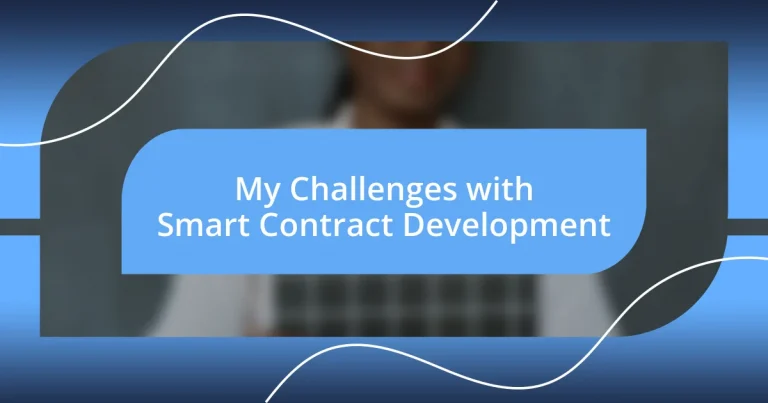Key takeaways:
- Smart contracts automate transactions on a blockchain but require a solid understanding of programming and security practices to avoid costly mistakes.
- Proficient testing and debugging using tools like Truffle and Ganache is crucial to ensure smart contracts are reliable and secure.
- Regular code reviews and automated security analysis tools are effective strategies for managing vulnerabilities and enhancing the overall security of smart contracts.
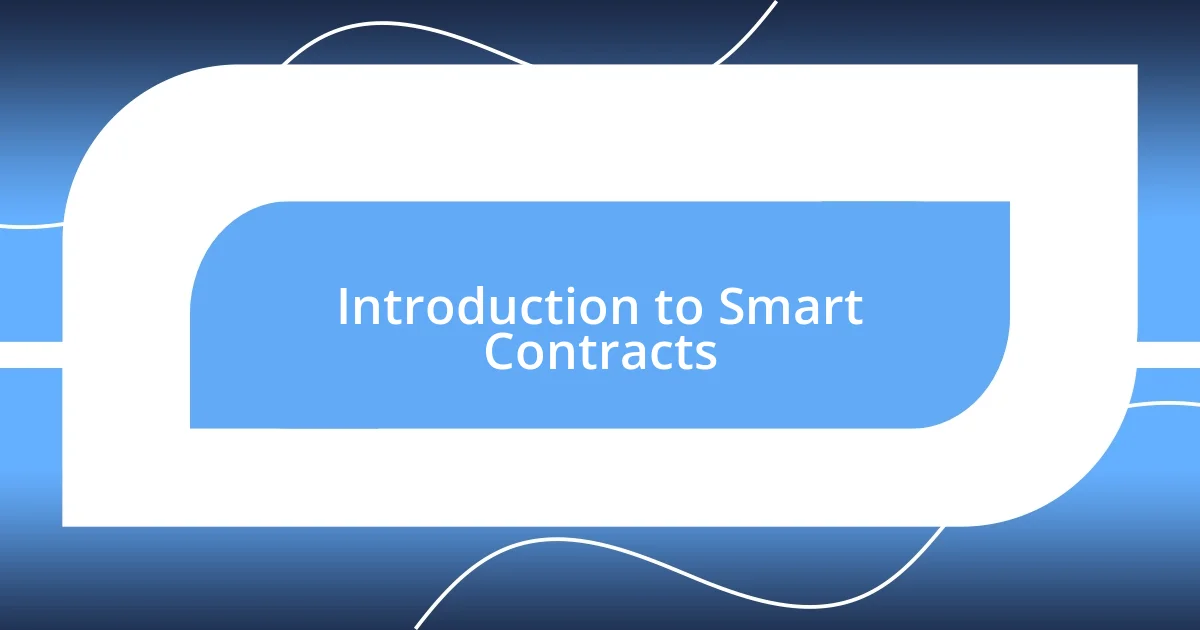
Introduction to Smart Contracts
Smart contracts are like digital agreements, coded onto a blockchain that execute automatically when predetermined conditions are met. I remember the first time I encountered smart contracts; it felt like unlocking a door to a new world of possibilities in technology and finance. Suddenly, the idea of eliminating middlemen and ensuring transactions were safe and transparent became real—and a bit thrilling.
When I think about smart contracts, I often wonder: What if we could streamline more of our daily tasks through this technology? The ability to automate processes makes me feel hopeful about the future, especially in areas like supply chain management and real estate. However, the learning curve can be steep, and I’ve faced my fair share of headaches while trying to grasp the intricacies of coding these contracts.
Beyond their innovative potential, smart contracts come with their own set of challenges and pitfalls. I’ve stumbled through debugging contracts more times than I’d like to admit, reminding me that while technology can be empowering, it also requires a solid understanding of underlying principles to avoid costly mistakes. Ultimately, grasping what smart contracts are and how they function is just the beginning of this fascinating journey.
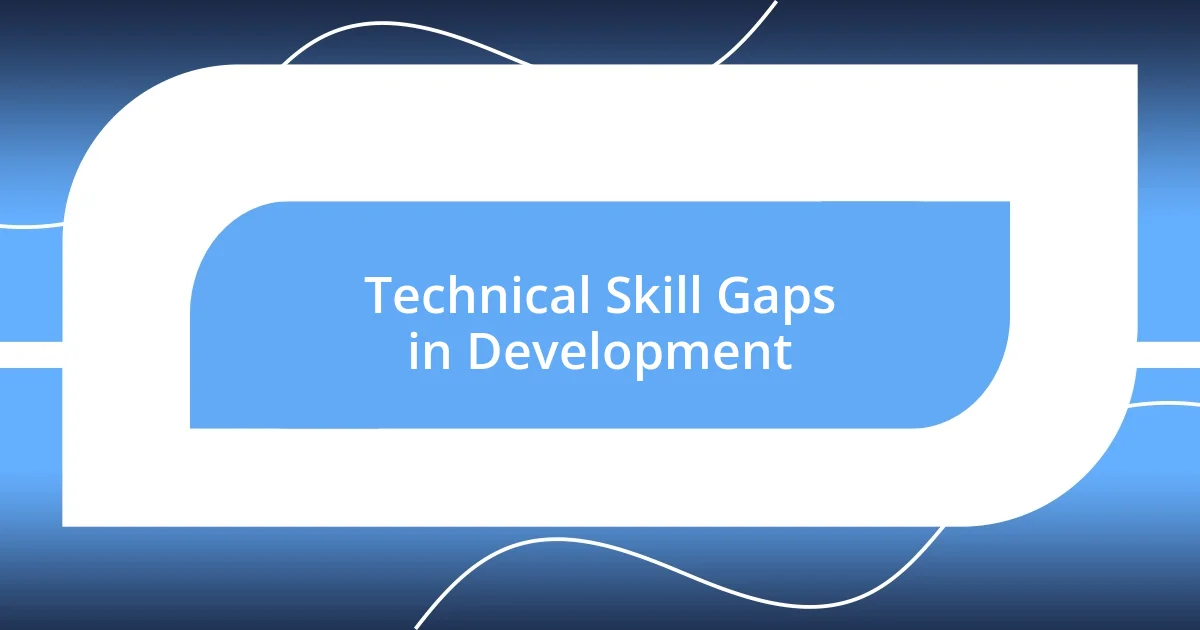
Technical Skill Gaps in Development
As I delved deeper into smart contract development, I encountered some glaring technical skill gaps that I hadn’t anticipated. It became clear that a solid foundation in various programming languages, such as Solidity, is essential—but also challenging. I often felt overwhelmed when I dived into complex concepts like gas optimization and security audits, realizing these areas required specialized knowledge that I didn’t possess yet.
Here are some specific skills where I’ve noticed significant gaps among developers like myself:
- Understanding Blockchain Architecture: Grasping how different blockchain platforms operate can drastically affect contract performance.
- Security Best Practices: The importance of security in smart contracts cannot be overstated; I’ve seen projects that failed due to basic vulnerabilities.
- Testing and Debugging: Mastering effective testing frameworks is crucial, but it can be a painstaking process to keep contracts bug-free in diverse environments.
Being proactive in addressing these gaps has proven vital for my growth, though it often feels like chasing shadows in a field that’s constantly evolving.
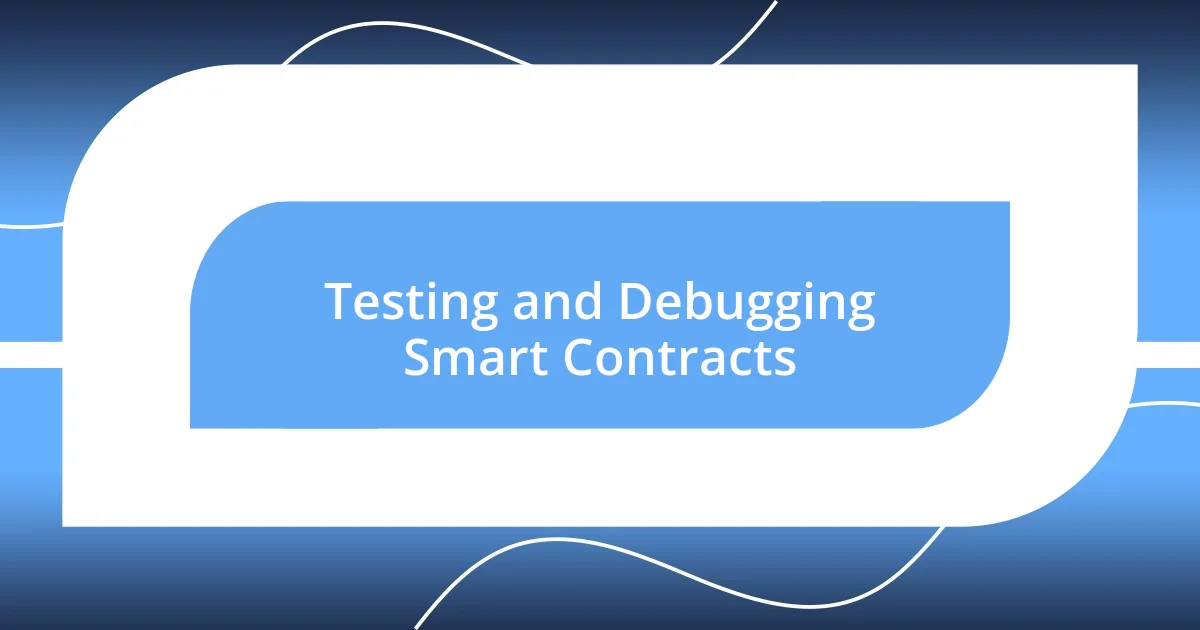
Testing and Debugging Smart Contracts
Testing and debugging smart contracts can feel like navigating a minefield. I distinctly remember one instance where I thought my contract was ready for deployment, only to discover it contained a critical error during testing. The frustration was palpable; I had to step back and analyze the logic line by line, which eventually turned into a learning experience about the importance of thorough testing in the development process.
In my experience, using tools like Truffle and Ganache has made a significant difference. These frameworks provide a simulated environment to catch errors before they lead to costly mistakes. I can’t stress enough how essential it is to utilize these tools early on. They allow you to create tests that mirror real-world conditions, which I found incredibly beneficial after facing crashes that could have easily been avoided with better testing strategies.
One of the greatest challenges I grappled with was ensuring my smart contracts adhered to best security practices. Learning about vulnerabilities such as reentrancy or overflow errors was enlightening but also daunting. I often wondered if I could ever write bug-free code. Though it’s true that accounting for every potential issue seems overwhelming, the sense of accomplishment I felt after successfully identifying and fixing issues is what keeps me motivated to hone my skills further.
| Aspect | Truffle | Hardhat |
|---|---|---|
| Testing Environment | Local Blockchain with Ganache | Built-in Local Blockchaiin |
| Error Handling | Custom Error Messaging | Automatic Error Logging |
| Documentation | Comprehensive Guides | Community-driven Resources |
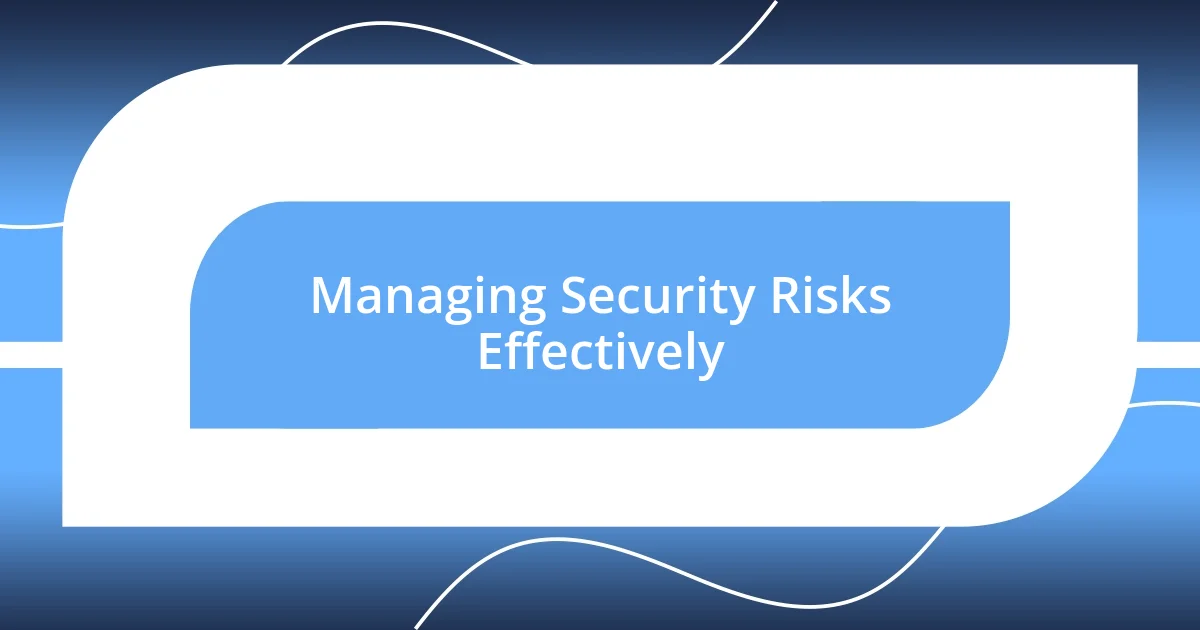
Managing Security Risks Effectively
Navigating the complexities of smart contract security feels like a high-stakes balancing act. I vividly recall a moment when a seemingly minor oversight led to a significant vulnerability in my code. It was a wake-up call that pushed me to adopt a mindset of constant vigilance. I realized that even the smallest omissions can open doors to massive security breaches. Have you ever felt that chill of uncertainty when you finally understand the implications of an oversight?
One of the most effective strategies I’ve embraced is conducting regular code reviews with fellow developers. This collaborative approach not only highlights potential issues I might have overlooked but also creates an environment of shared learning. It’s like having a safety net, where different perspectives aid in identifying vulnerabilities before they become critical failures. Each review session often transforms into a deeper discussion about best practices, which reinforces my understanding and sharpens my coding skills.
I’ve also found that employing automated security analysis tools has been a game changer for risk management. Tools like MythX and Slither help me catch vulnerabilities in code before deployment, making me feel more secure in my work. Initially, I was skeptical—could these tools really catch what I might miss? However, the first time I received a report highlighting a potential reentrancy issue I hadn’t noticed, I became a believer. This blend of automation and community collaboration has not only bolstered my confidence but also significantly mitigated risks in my smart contracts.












